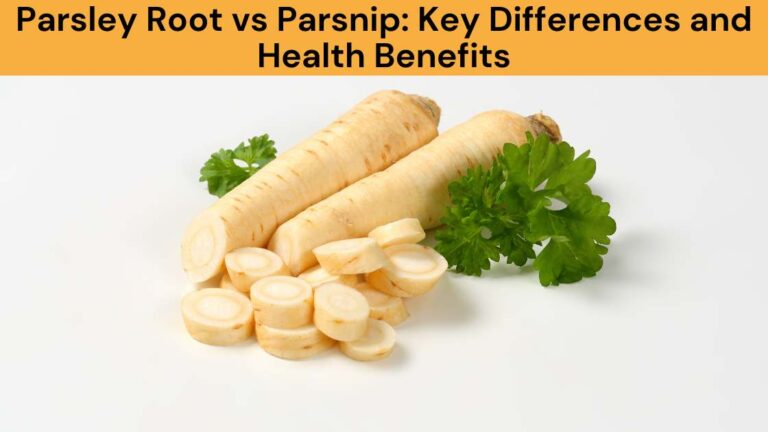Watermelon and pumpkin plants are two varieties of plants that are often compared and contrasted due to their similarities and differences. This article will examine the growing conditions, nutritional value, appearance, uses, and flavor profiles of watermelon and pumpkin plants in order to establish the distinctions between them.
Key Takeaways
The differences between watermelon and pumpkin plants are numerous and important to consider when deciding which one to use:
- Watermelon plants thrive in warm and sunny climates, while pumpkin plants prefer cooler and shadier environments.
- Watermelon is a great source of lycopene, while pumpkin is high in fiber and Vitamin A.
- Watermelon has a thin, smooth, and hard rind with a juicy, sweet flesh, while pumpkin has a thick, ribbed, and hard rind with a dense, sweet flesh.
- Watermelon is used mainly in desserts, salads, and drinks, while pumpkin is commonly used in desserts, soups, and pies.
- Watermelon has a sweet and refreshing taste, while pumpkin has a sweet and earthy taste.
- Watermelon plants are usually grown in the warm summer months, while pumpkin plants are usually grown in the cool autumn months.
- Watermelon plants are usually harvested in the summer, while pumpkin plants are usually harvested in the fall.
These seven key differences between watermelon and pumpkin plants should be considered when deciding which one to use.
Growing Conditions
The growth requirements for watermelon and pumpkin plants differ significantly. Watermelons are a warm-season crop that requires a long, warm growing season to produce fruit. Planting is typically done in late spring or early summer, when the soil is warm and there is no chance of frost. A well-draining soil with plenty of organic matter is ideal for growing watermelon. When planting, it is important to space plants far enough apart so they can spread out and get the sun they need. Watermelons need plenty of water but should not be overwatered.
Pumpkins are a cool-season crop that is planted in late spring or early summer, when the soil is still cool. A well-draining soil with plenty of organic matter is ideal for pumpkin plants. Pumpkins need plenty of water but should not be overwatered. Pumpkins should be planted in an area where they will get six to eight hours of direct sunlight daily. The plants should be spaced far enough apart so they can spread out and get enough sun.
Watermelons and pumpkins have different fertilization requirements. Watermelon plants need to be fertilized with a balanced fertilizer, such as a 10-10-10 fertilizer, about once a month during the growing season. Pumpkins need to be fertilized with a balanced fertilizer, such as a 10-10-10 fertilizer, about every two weeks during the growing season.
Watermelons and pumpkins differ in their pest and disease control requirements. Watermelons are prone to pests such as aphids, cucumber beetles, and whiteflies. It is important to inspect the plants regularly and treat them with insecticides as needed. Pumpkins are susceptible to several diseases, including powdery mildew, downy mildew, and cucurbit viruses. It is important to inspect the plants regularly and treat them with fungicides as needed.
Nutritional Value
Comparing the nutritional value of both fruits reveals significant differences. Watermelon contains more vitamins and minerals than pumpkin, including vitamins A, C, and B6, as well as potassium and magnesium. Watermelon also contains lycopene, an antioxidant that can help reduce the risk of cancer. Pumpkin, on the other hand, is a good source of fiber, vitamin A, and potassium, and contains more protein than watermelon.
The two fruits also differ in calorie content. Watermelon is lower in calories, with only 46 calories per cup, while pumpkin contains 83 calories per cup. Additionally, watermelon is made up of 92% water, which helps to keep the body hydrated and can even help reduce water retention.
Here is a summary of the nutritional value of each fruit:
- Watermelon: Vitamins A, C, B6, potassium, magnesium, and lycopene, 46 calories per cup, and 92% water
- Pumpkin: Fiber, vitamin A, potassium, and protein, 83 calories per cup
Appearance
Examining the appearance of the two fruits reveals distinguishing characteristics. Watermelon is a large, round or oval-shaped fruit that has a tough, green rind and a red fleshy interior. The flesh of a watermelon is often dotted with small, black seeds that are edible. Pumpkin is also a round or oval-shaped fruit, but typically smaller than a watermelon. The rind of a pumpkin is often more of an orange color, and is slightly softer than the rind of a watermelon. The flesh of a pumpkin is usually a bright yellow or orange color, and its seeds are usually larger than those of a watermelon.
The size of a watermelon can vary greatly, with some weighing as much as 20 pounds. In comparison, most pumpkins weigh just a few pounds, with some reaching up to 25 pounds. The shape of a watermelon is usually more of a rounded oval, while the shape of a pumpkin is usually more of a flat, round shape. The rind of a watermelon is usually a bit smoother than that of a pumpkin, and it is usually a darker green. The rind of a pumpkin is usually a bit more rough, and it is usually a bright orange.
The color of the flesh of a watermelon is usually a bright, deep red, and the flesh of a pumpkin is usually a bright yellow or orange. The seeds of a watermelon are usually black, and they are small and edible. In contrast, the seeds of a pumpkin are usually larger and a lighter color, and they are edible as well.
Uses
Both fruits have a variety of different culinary uses. Watermelon is most commonly consumed raw, either on its own or in a variety of fruit salads. It is also a popular ingredient in smoothies and juice drinks. Pumpkin is also frequently consumed raw, either as a standalone snack or as part of a salad. It can also be cooked in a variety of dishes, such as pies, cakes, soup, and even pasta.
The two fruits also have a variety of uses beyond culinary:
- Watermelon is a popular ingredient in beauty treatments, as its juice is often used in face masks, hair treatments, and body scrubs.
- Pumpkin is often used as a decorative item, as it is very easy to carve into spooky or fun shapes for Halloween.
- Watermelon can also be used as a natural dye for clothing, fabrics, and other materials.
- Pumpkin can be used to make a natural fertilizer, as the seeds and pulp can be used to enrich the soil.
- Finally, pumpkin can also be used as livestock feed, as it is a great source of fiber, proteins, and other essential minerals.
Flavor Profile
The flavor profiles of these two fruits can vary significantly. Watermelon is a sweet, juicy fruit that often has a refreshing taste, especially when chilled. Its taste can range from mildly sweet to intensely sweet, depending on the variety of watermelon. Pumpkin, on the other hand, has a much more savory flavor profile. It tends to be earthy and slightly sweet, with notes of nutmeg and cinnamon often present. Its flavor can also vary depending on the variety, but its overall flavor is much more subtle than that of watermelon.
When it comes to flavor, watermelon is much more popular than pumpkin. This is because watermelon has a much more varied flavor profile that appeals to a wide range of palates. It can be used in both savory and sweet dishes, and is often a popular choice for desserts. Pumpkin, on the other hand, is mostly used in savory dishes and is often incorporated into pies, breads, and other baked goods.
In terms of nutrition, watermelon is a better choice than pumpkin. Watermelon is a low-calorie fruit that is packed with essential vitamins and minerals. It is also a good source of antioxidants, which can help protect against free radical damage and reduce inflammation. Pumpkin is also a good source of vitamins and minerals, however it contains more carbohydrates and calories than watermelon.
When it comes to flavor, watermelon and pumpkin are very different. Watermelon has a much sweeter, more refreshing flavor while pumpkin has a more subtle, earthy flavor. They can both be used in a variety of dishes, however watermelon is much more widely used and popular than pumpkin. Nutrition-wise, watermelon is a better choice than pumpkin due to its low calorie and high antioxidant content.
Frequently Asked Questions
How Long Does It Take for a Watermelon or Pumpkin Plant to Mature?
It generally takes between 85 to 120 days for a watermelon or pumpkin plant to reach maturity. The exact timeframe depends on the variety of the plant and growing conditions. For watermelons, the warmer the climate, the faster the plant matures, while for pumpkins, the opposite is true. The rate of growth for both watermelons and pumpkins can also be affected by soil fertility, water availability, and temperature. Generally, watermelons can be harvested when the rind turns yellowish and pumpkins when the rind turns orange.
Are Watermelons or Pumpkins More Difficult to Grow?
It is a difficult question to definitively answer as to which plant is more difficult to grow, watermelon or pumpkin. Factors that affect the difficulty in growing these plants include climate, soil type, and the amount of sunlight available. Watermelons require longer growing seasons, while pumpkins may require more water and fertilization. Additionally, watermelons can be more sensitive to frost, whereas pumpkins may be able to withstand colder temperatures. Ultimately, it is important to consider the specific growing conditions and to choose the appropriate planting date for each species.
Can a Watermelon or Pumpkin Plant Be Grown Indoors?
It is possible to grow both watermelon and pumpkin plants indoors, although it can be difficult to do so successfully. The size of the plant, its needs for light, water, and soil requirements must be considered. Watermelons, which can grow to be large, need more space, light, and water than pumpkins. Pumpkins, however, can require more soil depth than watermelons. When attempting to grow either indoors, it is important to use soil specifically designed for indoor gardening, as well as a large pot or container and an adequate amount of light.
Is There a Difference in the Environmental Impact of Growing a Watermelon or Pumpkin Plant?
The environmental impact of growing a watermelon plant versus a pumpkin plant can vary. Generally speaking, watermelons require more space to grow than pumpkins, as they are a larger, vine-like plant. Watermelon plants need to be planted in well-drained, sandy-loam soil that is rich in organic matter and nutrients, while pumpkins need soil that is more nutrient-rich and loamy. Watermelons also need more sunlight and water than pumpkins, and require higher temperatures and more humidity. As a result, the environmental impact of growing a watermelon plant versus a pumpkin plant can differ, depending on the climate and the soil in which they are planted.
Are There Any Pests or Diseases That Are More Likely to Affect Watermelon or Pumpkin Plants?
Pests and diseases can vary widely depending on the location and climate, however, some general trends are observed between watermelon and pumpkin plants. Common pests such as aphids, mites, and slugs can be found on both plants, although some species of aphids may prefer one over the other. Diseases such as powdery mildew, Fusarium wilt, and cucurbit yellow vine disease are also more likely to affect both watermelon and pumpkin plants. However, some diseases, such as watermelon mosaic virus and cucumber mosaic virus, are more likely to affect watermelon plants.
Conclusion
The differences between watermelon and pumpkin plants are numerous. Watermelon plants thrive in warm and sunny climates, while pumpkin plants prefer cooler and shadier environments. Watermelon is a great source of lycopene, while pumpkin is high in fiber and Vitamin A. Watermelon has a thin, smooth, and hard rind with a juicy, sweet flesh, while pumpkin has a thick, ribbed, and hard rind with a dense, sweet flesh. Watermelon is used mainly in desserts, salads, and drinks, while pumpkin is commonly used in desserts, soups, and pies. Finally, watermelon has a sweet and refreshing taste, while pumpkin has a sweet and earthy taste. Both watermelon and pumpkin are versatile plants with many uses in the kitchen, and it is important to consider the differences between them when deciding which one to use.





